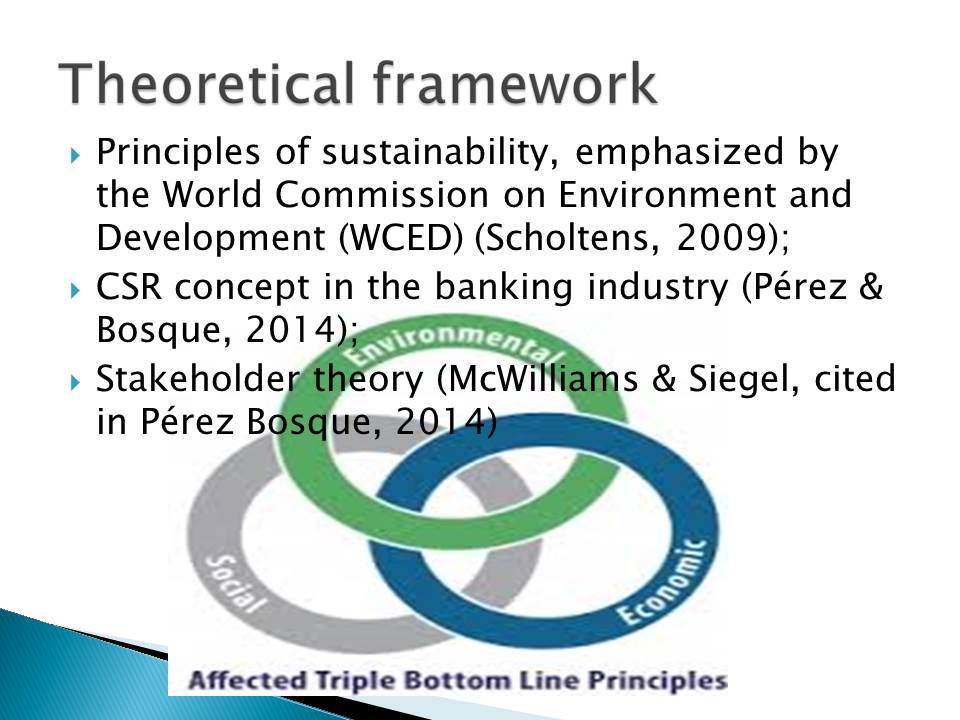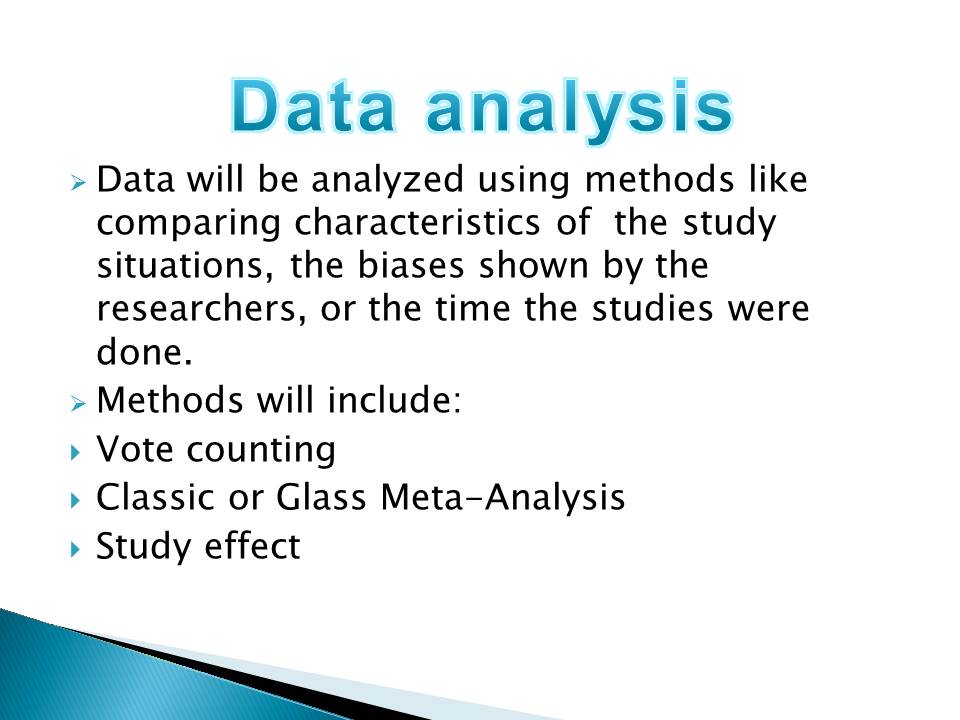Corporate social responsibility is essential in this age of intense globalization and competition – essential for firms to survive in the competition and also important for firms, particularly banks, as major players in economic development.
Industries have to respond to the call of environmental preservation and help in reducing environmental impact. CSR programs should include social and environmental activities, along with sustainability features. Sustainability includes motivation and encouragement in enhancing CSR activities.
There are various programs promoting CSR. Firms have to choose which one enhances customer trust because trust will improve depending on the type of CSR being engaged (Pérez and del Bosque, 2013).
Problem Statement
- A study indicates that banks and stock market actors are not interested in CSR (Arvidsson, 2014);
- Banks should implement their respective CSR programs;
- Banks are key players in sustainable economic development.
Banks have to promote sustainable development which is defined as development that should consider the present and future generations. This was emphasized by the World Commission on Environment and Development (WCED) (Scholtens, 2009), which formulated sustainability principles for businesses and organisations.
The problem seems puzzling at the start. We cannot think effectively because we try to ignore our responsibility and focus on other organizational functions, profit for instance.
If we do not plan collectively, we may not know what is going on. Each member and major stakeholder must recognize that there is something missing in the programs, objectives, and plans. We have to talk it out and be transparent with the stakeholders.
A simple discussion of the organizational mission and goals can help us find possible clues in finding the problem that needs immediate solutions, or questions that need answers.
We have to tell our stakeholders of the responsibility of the industry to the community and humanity as a whole – that CSR is part of our mission and goals.

Nature of the study: Meta-analysis
This research will use meta-analysis, which is similar to research reviews. These two tend to integrate knowledge on certain issues. Secondary analysis is also related to meta-analysis as it depends on existing information. Several authors use a combination of research review and meta-analysis (Hakim, 2005).
Meta-analysis was first introduced in psychology research, in the conduct of laboratory experiments and results of quantitative data. Meta-analysis provides combined and quantified results on the research question. For instance, one of the research questions for this study is, “What CSR practices do US banks implement?” The results will provide the number of banks using CSR practices, and these practices are grouped in themes or categorized as variables.
Purpose:
- This study will use meta-analysis on the study of CSR by U.S. Banks.
Research design:
- Data will be collected from online databases using search words, such as: corporate social responsibility, U.S. Banks, sustainable economic development, sustainability principles.
- Data will be analyzed to determine whether U.S. banks implement CSR in their activities and what are these CSR practices. This will also determine if CSR can led to organizational performance.
The pioneer in this technique of study was Beecher (as cited in Zou, 2012), but the originator of the term “meta-analysis” was Glass (as cited in Zou, 2012) whose aim was to provide a philosophical meaning to the process and not to give a statistical technique. This method used statistics in grouping, comparing, and contrasting researches, with the aim of knowing the factors affecting certain phenomena.


Research questions
- What CSR practices do U.S. banks implement?
- Has CSR improved organizational performance?
Khodaparasti, Forouzanfar, & Forouzanfar (2015) examined the relation between corporate social responsibility and corporate financial performance to determine CSR’s impact on a bank’s performance. The authors found that this relation has not received enough attention from researchers (Khodaparasti et al., 2015).
We need more empirical studies on the relationship of CSR and CFP, and see if we can draw CFP from CSR implementation. CSR is a broad concept, but broad in the sense that it is oriented to various stakeholders and groups (Goirigolzarri; Sarro et al., cited in Pérez & Bosque, 2014).

Purpose of the study
The purpose of the meta-analysis is to determine the type of CSR practices U.S. banks used and whether these practices affected organizational performance.
Variables:
- Independent variable.
Corporate social responsibility practices of U.S. banks:
- Dependent variable;
- Environmental, economic, and social practices.
The purpose of the study is to determine whether U.S. banks conduct CSR, if they implement it without reservation, and if their organizational performance improved after they implemented CSR. This is for the banks in the USA. We can cover the environment and community development, to include activities to support philanthropy, corporate citizenship, charity, and much more.
The picture or diagram above was implemented by the banking industry in the U.S., but we can use it in a smaller scheme, to cover the areas where CSR is most needed. The approach is to focus on the interests of our banks’ stakeholders.
In the plan, the names of the major stakeholders can be replaced with the names of banks or the places where these banks are situated. CSR objectives can remain as it is. The branches will have specific CSR policies and objectives. Banks can form teams, but an organization or bank branch is itself a team.


Theoretical framework
- Principles of sustainability, emphasized by the World Commission on Environment and Development (WCED) (Scholtens, 2009);
- CSR concept in the banking industry (Pérez & Bosque, 2014);
- Stakeholder theory (McWilliams & Siegel, cited in Pérez Bosque, 2014).
The triple bottom line emphasized environmental, social and economic principles of sustainability. Sustainability clearly defines the problem in the industry and the implementation process. This is about environmental solutions and not simple environmental activities. CSR promotes preservation and protection. Banks have to help and implement the bottom line principles.
We are witnessing one natural catastrophe after another. Tsunamis, typhoons, floods, earthquakes, fires, and all those natural devastations we can hardly imagine. Climate change has worsened every minute, every second of the day. CSR is the answer.

Assumptions/Limitations/Delimitations
Assumptions:
- CSR activities of U.S. Banks.
Limitations:
- Leadership disagreement;
- Lack of training;
- Funds for CSR activities.
Scope/Delimitation:
- Lack of empirical studies on CSR practices of U.S. banks.
CSR is not a mere activity; it is a solution. Every organization and every individual has to be involved. Industries should spearhead these undertakings. CSR is a major organizational concern that has to be implemented using organizational resources and capabilities of our people. We need to provide standards and guidelines.

Overview of literature
- Environment;
- Education;
- Developmenyt.
Overview of literature will include concepts and meaning of CSR, theories about CR, relationship of CSR and organizational performance, CSR practices of U.S. banks, to include practices in the industry.
We still see hope in CSR programs. This is a major organizational concern that must be implemented using organizational resources and capabilities of our people.
An old cliché states that youth holds the future of the motherland. This sector is a major stakeholder in CSR implementation and sustainable development.
CSR defines stakeholders as “those groups or individuals who can affect or are affected by the achievement of the organizational objectives, or are those actors with a direct or indirect interest in the company” (Freeman; Pérez et al., cited in Pérez & Bosque, 2014, p. 225).
Firms continually meet demands for CSR practices from humanitarian groups, customers, employees, suppliers, governmental organizations and stakeholders (McWilliams & Siegel, cited in Pérez Bosque, 2014).

Research design and approach
- The study used a phenomenological approach;
- The qualitative method led to some valuable information about the need to introduce CSR in organizations.
Meta-analysis provides assessment of the subject of the research. A good example is the assessment conducted by Rosenthal and Rubin (as cited in Hakim, 2005), on 350 articles, which prophesied the effects of researchers’ hypotheses. There were some theoretical and methodological issues of an experimental study which needed assessment. The researchers expected the results, and this was proven by the meta-analysis conducted (Hakim, 2005).

Data analysis
Data will be analyzed using methods like comparing characteristics of the study situations, the biases shown by the researchers, or the time the studies were done.
Methods will include:
- Vote counting;
- Classic or Glass Meta-Analysis;
- Study effect.
Vote counting is a review of the contents of the articles under study, wherein groups are formed with similar positive results and those with negative findings. The results which had many articles influenced the whole study. This is quite simple because the articles have an almost general trend.
Classic or Glassian refers to the traditional Glass Meta-analysis, which provides the research questions, followed by a collection of the case studies in the literature.
Study effect is an improvement of the two methods. In this method, the research selects the articles and excludes some. Analysis is affected by this type (Zou, 2012).

Data collection
- U.S. banks using CSR practices as part of major organizational functions;
- U.S. banks using CSR practices as part of departmental functions;
- U.S. banks which did not have CSR practices.
Data collection will come from articles and journals after a thorough search in the databases. Search words include “corporate social responsibility,” “CSR practices of U.S. Banks,” “sustainability principles,” “sustainable economic development,” etc.

References
Arvidsson, S. (2014). Corporate social responsibility and stock market actors: A comprehensive study. Social Responsibility Journal, 10(2), 210-225. Web.
Dunnett, N., Gedge, D., Little, J., & Snodgrass, E. (2011). Small green roofs: Low-tech options for greener living. London: Timber Press, Inc.
Hakim, C. (2005). Research design: Success designs for social economic research. New York: Taylor & Francis Group.
Khodaparasti, R., Forouzanfar, E., & Forouzanfar, E. (2015). Impact of corporate social responsibility on financial performance of a bank. Actual Problems of Economics, 1(163), 338-343. Web.
Pérez, A & Bosque, I del (2014). Customer CSR expectations in the banking industry. International Journal of Bank Marketing, 32(3), 223-244.
Scholens, B. (2009). Corporate social responsibility in the international banking industry. Journal of Business Ethics, 86(1), 159-175.
Yeung, S. (2011). The role of banks in corporate social responsibility. Journal of Applied Economics and Business Research, 1(2), 103-115. Web.
Zou, L. (2012). A meta-analysis framework and its application for exploring the driving causesto social vulnerability. Web.